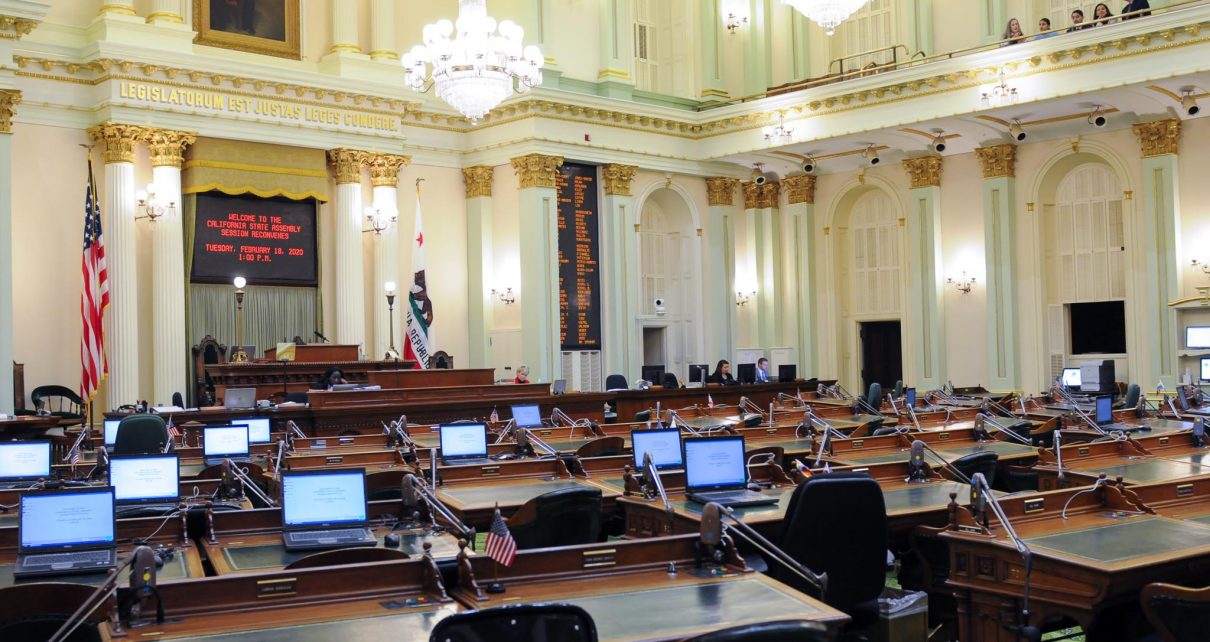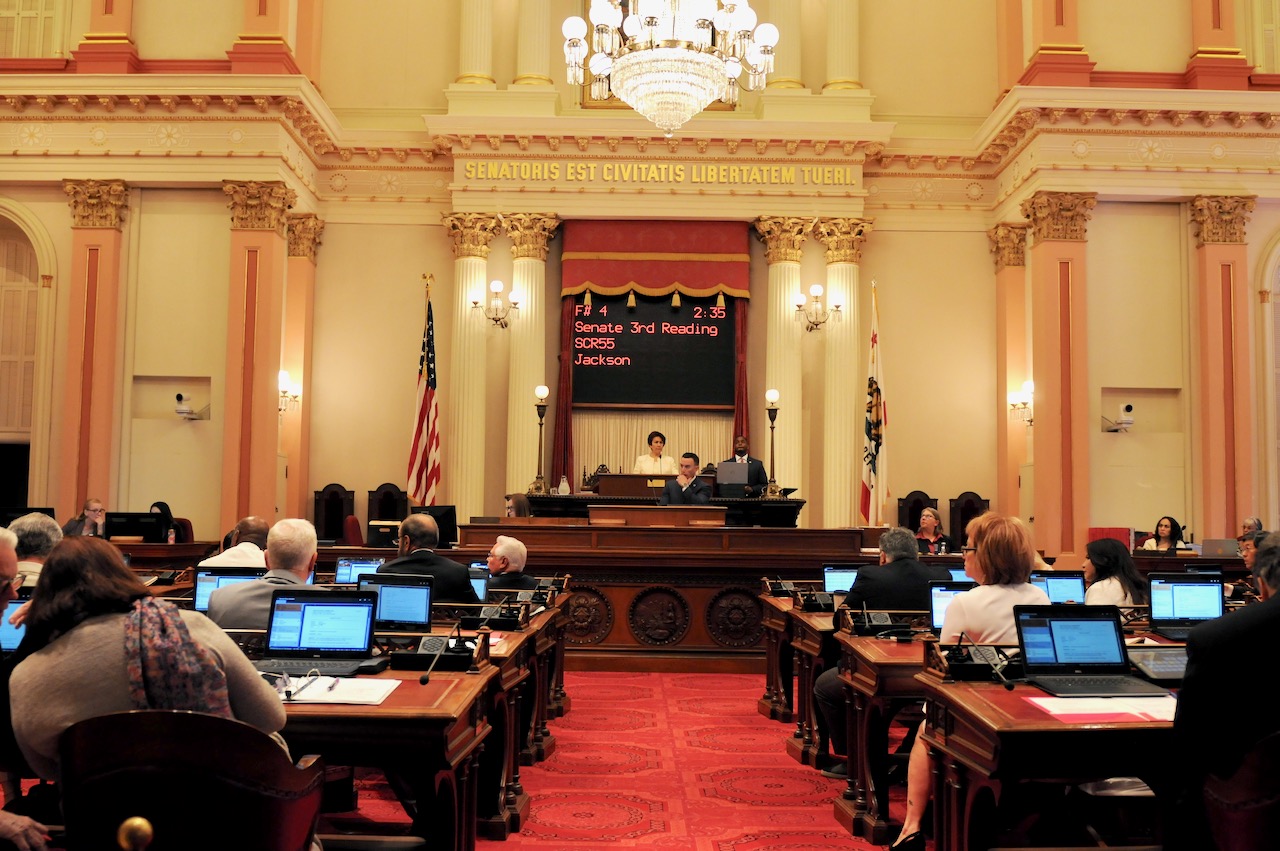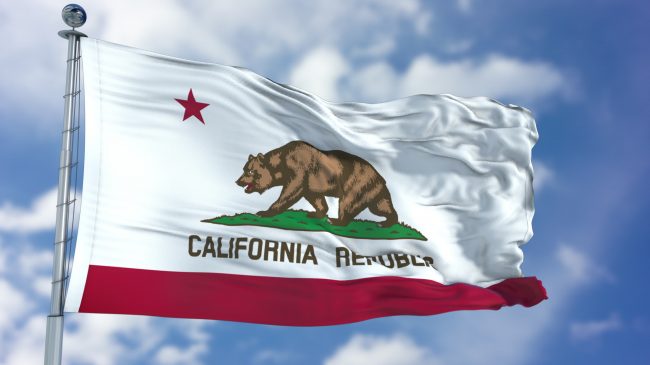
California State Assembly. (Photo: Kevin Sanders for California Globe)
Should After School Programs Bills Require Detailed Legislative Findings?
The California Legislature was granted authority to amend specified sections of Prop. 49
By Chris Micheli, April 1, 2022 6:18 am
Similar to bills proposing to amend the California Political Reform Act, California Privacy Rights Act, and others, in reviewing recently-introduced legislation that proposes amendments to Proposition 49, the same legislative finding and declaration is made in each bill. It is a simplistic statement that raises the question whether this language meets the requirement of Prop. 49. And, it raises concern whether the courts will find such language sufficient to justify an amendment to Prop.49.
The California Legislature was granted authority to amend specified sections of Prop. 49, which was adopted by the state’s voters in 2002. Prop. 49 enacted the “Before and After School Programs.” These bills that propose amendments to Prop. 49 contain language similar to the following example:
The Legislature finds and declares that the amendment to add subdivision (g) to Section 8482.55 of the Education Code, made by Section 2 of this act, furthers the purposes of the After School Education and Safety Program Act of 2002.
Readers will recall that Article II, Section 10 of the California Constitution provides in Subdivision (c):
The Legislature may amend or repeal a referendum statute. The Legislature may amend or repeal an initiative statute by another statute that becomes effective only when approved by the electors unless the initiative statute permits amendment or repeal without the electors’ approval.
This constitutional provision only allows an initiative that was adopted by the state’s voters to be amended by the Legislature (such as Prop. 49) if the initiative permits amendment without the electorate’s approval. Prop. 49 does allow amendment by the Legislature in Section 14 of the measure, which reads as follows:
SEC. 14. Except for Sections 8482.55, 8483.5, and 8483.6 of the Education Code, the After School Education and Safety Program Act of 2002 may be amended to further its purpose by statute, passed in each house by a majority vote of the membership concurring and signed by the Governor. Section 8482.55 of the Education Code may be amended to further the purpose of the After School Education and Safety Program Act of 2002 by statute, passed in each house by a two-thirds vote of the membership concurring and signed by the Governor. Sections 8483.5 and 8483.6 of the Education Code may not be amended by the Legislature.
The above section of Prop. 47 explains how the language can be amended and which sections of the law may be amended by the Legislature.
As a result, the Legislature may amend Prop. 49 “to further its purpose.” So, when the Legislature desires to amend Prop. 49, it includes in a “plus section” (which can be seen at the end of a bill that proposes to amend Prop. 49) a legislative finding and declaration. The following is an example of what is contained in almost every Prop. 49 amendment bill:
The Legislature finds and declares that this act furthers the purposes of the After School Education and Safety Program Act of 2002.
The question to address is whether the language in the above example is sufficient or if there should be some explanation why the Legislature believes the purpose of Prop. 49 is being furthered by the proposed amendment. In other words, this legislative finding and declaration at the end of the bill should be tied back to the purpose of Prop. 49 in its Sections 2 and 3.
The following provisions explain the purposes of Prop. 49:
SEC. 2. The people find and declare all of the following:
(a) Studies by law enforcement and nonprofit organizations show that the after school hours between 3 p.m. and 6 p.m. on school days are the peak hours for children to become victims of violent crimes or to commit violent crimes themselves. The after school hours are also the peak hours for drug and alcohol use and car accidents involving children.
(b) Research shows after school programs have a major positive impact on society by making our streets safer, and reducing risk taking behavior such as alcohol, tobacco and drug use by teenagers.
(c) Studies by the University of California Los Angeles and the University of California Irvine of existing after school programs in California show the after school programs have a major positive impact on the education of our children by increasing school attendance, reducing suspensions, and improving standardized test scores.
(d) After school programs save taxpayer money by reducing crime, reducing health costs associated with drug and alcohol use, cutting grade repetition, and reducing the need for remedial education.
(e) After school programs help working families by providing their children a safe, educationally enriching place to go after school when there is no parent at home.
(f) School buildings, playgrounds, and other school facilities are a huge taxpayer investment, and they can and should be better utilized during before and after school hours, especially for after school programs for California’s children.
(g) The After School Learning and Safe Neighborhoods Partnerships Program has successfully provided incentive grants for after school and nonschoolday programs that have proven to increase academic performance and to improve behavior of children, especially children at risk.
(h) Only a small portion of elementary and middle schools in California currently operate an after school program. With approximately 50 percent of California’s children having either a single working parent, or two parents who both work, after school programs have become a necessity, not a luxury.
(i) Although new funding of after school programs is extremely important, revenues guaranteed by law for our public school system pursuant to Proposition 98 should first be fully appropriated and therefore not be used to increase the funding of these after school programs. The new funding for after school programs will therefore be funded above the legally required educational funding.
(j) And because there are essential, noneducation state programs that need continued funding, increasing funding for these after school programs should occur only after substantial growth in state revenues not guaranteed for education purposes.
SEC. 3. Therefore the people enact the After School Education and Safety Program Act to encourage schools and school districts to use school facilities and other appropriate locations to provide a safe and educationally enriching place for children in grades K through 9 to be when they are not in school and to accomplish the following specific purposes:
(a) To rename the After School Learning and Safe Neighborhoods Partnerships Program the After School Education and Safety Program (ASESP), but not to change its program operations under existing law and to continue to require a 50 percent match of local funding.
(b) To expand ASESP funding to a level sufficient to:
(1) First, fund all existing before and after school and nonschoolday grants.
(2) Second, make available universal after school incentive grants to every public (including charter) elementary, middle, and junior high school in California making an acceptable application.
(3) Third, increase funding for before and after school programs beyond current appropriations when more state revenue is available.
(c) To give priority for increased state funding to schools with predominately low-income students from funds available once every eligible school has the opportunity to receive an initial universal after school grant.
(d) To add computer training, fine arts, and physical fitness programs to the educational/literacy and enrichment/recreational components of existing law.
(e) To solicit local law enforcement input in program development.
(f) To fund the expansion of state grants to schools for this program only out of growth in state revenues, instead of new taxes, and only after state revenues that are otherwise legally guaranteed to fund education programs have already been fully appropriated.
(g) To appropriate four hundred sixty-five million dollars ($465,000,000) for new program expenditures above the existing statutory appropriation of eighty-five million dollars ($85,000,000) for a total of five hundred fifty million dollars ($550,000,000), much of which will be offset from savings expected from reduced costs in crime and education.
(h) To make sure this new four hundred sixty-five million dollar ($465,000,000) appropriation is not an undue burden on other state programs, to provide a trigger to increase the eighty-five million dollar ($85,000,000) appropriation in the 2004–05 fiscal year or later when and only if state revenues have grown sufficiently over the highest of the 2000–01, 2001–02, 2002–03, or 2003–04 fiscal years to provide more than one billion five hundred million dollars ($1,500,000,000) in new appropriations not guaranteed for education purposes.
(i) To ensure each school gets the highest quality program possible, provide 11/2 percent of the appropriation for the program for technical assistance and program evaluation.
Should the bills that propose amendments to Prop. 49 include reference to any of these findings and declarations or purposes? That is the approach often taken with urgency clauses and special statutes. If courts examine the urgency clause or special statute findings, there is at least a short sentence or paragraph that explains why the Legislature has determined a particular bill needs an urgency clause or why the bill qualifies as a special statute.
As an example for these Prop. 49 bills to use, California’s AUMA (allowing the adult use of cannabis) initiative statute similarly allows legislative amendment if those amendments further the purposes of the AUMA. A recently-introduced bill amending the AUMA contains what could be an example for CPRA amendment bills:
The Legislature finds and declares that this act furthers the purposes and intent of the Control, Regulate and Tax Adult Use of Marijuana Act (AUMA) by accomplishing all of the following:
(a) Preventing the illegal diversion of cannabis to other states by providing legal and regulated channels for multistate commercial cannabis activities.
(b) Reducing barriers to entry into the legal, regulated market by providing additional legal outlets for cannabis and cannabis products produced in California.
(c) Ensuring that cannabis and cannabis products produced in other states and sold in this state meet the same testing and packaging requirements required under AUMA.
So, perhaps the bills that propose to amend Prop. 49 should also provide some rationale for their proposed amendments so that, if the legislation were challenged in litigation, courts would have a basis for understanding why the Legislature determined the bill made an amendment to Prop. 49 that furthered its purposes. As a result, the Legislature should consider adding some explanatory language to their simple statements in Prop. 49-amendment bills.
Finally, to assist the courts additionally, the committee and floor analyses prepared by the Assembly and Senate consultants should also describe these legislative findings and declarations and the rationale for them. These actions will hopefully ensure that the judiciary will uphold any amendments to Prop. 49 enacted by the Legislature and Governor in the future.
- Second Quiz on Where Areas of Law Are Found in the California Codes - December 21, 2025
- Bonds and Undertakings in California - December 21, 2025
- Pleadings in Eminent Domain Cases - December 20, 2025





Findings show “after school hours between 3 p.m. and 6 p.m. on school days are the peak hours for children to become victims of violent crimes or to commit violent crimes themselves. The after school hours are also the peak hours for drug and alcohol use and car accidents involving children.”
This is seldom the case if there is a parent at home during this time – doing the job they signed up for.